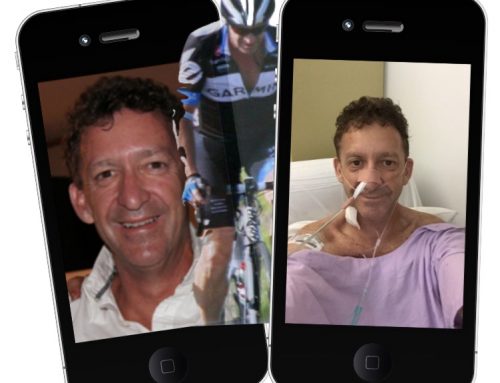
Shared information is powerful it improves Outcomes
What do you think about this article ? can you add? do you know of other articles on this subject?
Tags
Understanding the Cholangiocarcinoma Process and taking back control
Understanding the Cholangiocarcinoma Process and taking back control is all about getting your mind into the right space as quickly as you can.
You will be challenged to achieve this at a time when your mind is paralysing with fear and overwhelm, which is a very normal reaction in hearing that you have cancer, its so bloody hard to file into a place that fits.
The following information is broken down into sections that I went through. I have laid them out in an order that makes sense to me.
I have done this with the best of intentions as one patient wanting to help another, and I sincerely hope that this is achieved.
All the best
Steve
Ps I intend to update this content in the future so if you see anything i need to or could add please drop them in the comments.
www.steveholmes.net.au
Steves interpretation:
“Cholangiocarcinoma is a Cancer of the Bile Ducts that start in your Liver travel through and include your GallBladder Common Bile Duct all the way down past to your stomach and Pancreas – ending at the Duodenum. Its very rare and devastating. The only known curative option is remove surgically at an early stage, although this is rarely successful. – Do not muck around as this cancer spreads very quickly without mercy – Keep an eye on Immuno-Oncology options that have the potential to offer Curative Treatments”
The following adapted from National Institutes of Health: http://www.cancer.gov/
Cholangiocarcinoma starts in the bile duct that begins within the Liver. The major function of the bile duct is to move a fluid called bile from the liver and gallbladder to the small intestine, where it helps digest the fats in food.
Cancers in these different areas may cause different symptoms.
- What is Intrahepatic Cholangiocarcinoma?
These cancers develop in the smaller bile duct branches inside the liver. They can sometimes be confused with cancers that start in the liver cells. Only 10% of bile duct cancers are intrahepatic. - What is Perihilar (Hilar) Cholangiocarcinoma?
These cancers develop where the right and left hepatic ducts have joined and are leaving the liver. They are also called Klatskin tumors. These are the most common type of cholangiocarcinoma accounting for more than half of all bile duct cancers. - What is Distal Cholangiocarcinoma?
These cancers are found further down the bile duct closer to the small intestine. Distal bile duct cancers start outside the liver and make up 20 to 30% of bile duct cancers. - What is Extrahepatic Cholangiocarcinoma?
Because perihilar and distal bile duct cancers start outside the liver, they are often grouped together and referred to as extrahepatic cholangiocarcinoma.
Cholangiocarcinoma can also be divided into types based on how the cancer cells look under the microscope. More than 95% of bile duct cancers are carcinomas and most are adenocarcinomas. Adenocarcinomas are cancers of glandular cells that can develop in several organs of the body. Bile duct adenocarcinomas develop from the mucous glands that line the inside of the duct. Cholangiocarcinoma is another name for a bile duct carcinoma.
Steve’s interpretation:
“Typically Cancerous Tumours survive and thrive because they manage to hide, evade and remain invisible to our Immune Systems T Cells whose job is to seek out, attack and destroy, foreign, abnormal or suspicious cells.”
Cancer.gov
“Normally, human cells grow and divide to form new cells as the body needs them. When cells grow old or become damaged, they die, and new cells take their place.
When cancer develops, however, this orderly process breaks down. As cells become more and more abnormal, old or damaged cells survive when they should die, and new cells form when they are not needed. These extra cells can divide without stopping and may form growths called tumors.
Many cancers form solid tumors, which are masses of tissue.
Cancerous tumors are malignant, which means they can spread into, or invade, nearby tissues. In addition, as these tumors grow, some cancer cells can break off and travel to distant places in the body through the blood or the lymph system and form new tumors far from the original tumor.”
As a rule, a lower stage (such as a stage 1 or 2) means that the cancer has not spread very much. A higher number (such as a stage 3 or 4) means it has spread more. Stage 4 is the highest stage.
For a more detailed staging for Cholangiocarcinoma’s
READ MORE
Steves interpretation:
“A Biopsy is an examination of tissue removed from your tumour to discover the presence, cause, or extent of a the Cholangiocarcinoma.
Why have a biopsy?
Your Oncology team can better understand your tumours treatment options and if it matches any new immunotherapy options which are potentially curative.
Consider these simple points
- A Biopsy reveals more about your cancer creating a clearer window on treatment options, particularly Immunotherapy options which potentially could lead to curative outcomes.
- Without a Biopsy the view is limited and your Oncologist is more likely to enlist traditional First line Treatment options such as Gem/Cis Chemotherapy. There are many more options than this standard treatment plan with most created around chemotherapy.
- Trials normally have a biopsy as part of their qualifying criteria.
Surgery Chemotherapy or Immunotherapy?
or all of the above?
Steve’s interpretation
Surgery
If you are lucky you will discover early and have an opportunity of a potentially Curative Surgery. Surgery options range from partial liver resections for intrahepatic patients (ie Cancer is in the Bile Ducts within the Liver) or a ‘Whipple’ Operation for Extrahepatic (Cancer is in the Bile Duct outside the liver)
Chemotherapy
“First line” Treatment options often begin with “Gem/Cis” or Capcetabine. “Gem/Cis” is often used before and or after surgery options.
Because the majority of patients present late (Stage 4) and are inoperable “Gem/Cis” is a key treatment plan to reduce tumours and then operate or to continue ongoing management in stopping progression and reducing.
Immuno-Oncology
Immunotherapy treatment options are not yet out of trial phases, but can be accessed via trials or privately if your biopsy shows a match.
The above interpretations are in a very simplest format, so please do not take my wording to literally. Considered these as a starting point, as there are many other options.
Cholangiocarcinoma Foundation says;
After bile duct cancer is found and staged, your cancer care team will discuss your treatment options with you. It is important for you to take time and think about your choices. In choosing a treatment plan, there are some factors to consider:
The location and extent of the cancer
Whether the cancer is resectable (removable by surgery)
The likely side effects of treatment
Your overall health
The chances of curing the disease, extending life, or relieving symptoms
If time permits, it is often a good idea to seek a second opinion, particularly for an uncommon cancer like bile duct cancer. A second opinion can provide more information and help you feel more confident about your chosen treatment plan.
Steve’s interpretation
“This is getting into the area of de-cloaking the hidden tumours so that immune systems T-Cells and see and destroy them. Successful matches to certain immunotherapy options are leading to Curative outcomes. Research this subject thoroughly and stay connected to the fast evolving options coming on through trials. “Opdivo and Keytruda” are the leading players with Keytruda being the standout at them moment. See links below”
Another article
How they work PD-1 and PD-L1 are types of proteins found on cells in your body. PD‑1 protein is found on immune cells called T cells. It normally acts as a type of “off switch” that helps keep the T cells from attacking other cells in the body. PD-1 attaches to PD‑L1, a protein found on some normal (and cancer) cells. This interaction basically tells the T cell to leave the other cell alone and not attack it. Some cancer cells have large amounts of PD‑L1, which helps them hide from immune attack.
Therapies such as Keytruda and Nivolumab (Opdivo) that target either PD-1 or PD-L1 can stop them from attaching and help keep cancer cells from hiding. READ MORE
Via Cancer research UK
Checkpoint inhibitors are used to treat cancers such as melanoma skin cancer and lung cancer. Researchers are also looking at them in clinical trials for other types of cancer.
You might also hear these drugs called CTLA-4 inhibitors, PD-1 inhibitors and PD-L1 inhibitors.
How checkpoint inhibitors work
Our immune system protects us from disease, killing bacteria and viruses. One main type of immune cell that does this is called a T cell.
T cells have proteins on them that turn on an immune response and other proteins that turn it off. These are called checkpoints.
Some checkpoint proteins help tell T cells to become active, for example when an infection is present. But if T cells are active for too long, or react to things they shouldn’t, they can start to destroy healthy cells and tissues. So other checkpoints help tell T cells to switch off.
Some cancer cells make high levels of proteins. These can switch off T cells, when they should really be attacking the cancer cells. So the cancer cells are pushing a stop button on the immune system. And the T cells can no longer recognise and kill cancer cells.
Drugs that block checkpoint proteins are called checkpoint inhibitors. They stop the proteins on the cancer cells from pushing the stop button. This turns the immune system back on and the T cells are able to find and attack the cancer cells.
- “Surgery if removed at an very early stage as a potential curative outcome.
- Immunotherapy is potential providing “Curative Options.”
Please note that Chemotherapy is not curative option
Steve’s interpretation
“Trials offer hope at overcoming Cholangiocarcinoma and there is some great options constantly becoming available. If you are in the care of a Cholangiocarcinoma specialist Oncologist, in a well resourced main centre hospital then you will be exposed to the best and latest options. If you are not then I urge you to make this a priority.
Your acceptance into a trial will depend on your biopsy results – without this you will not proceed. My advice insist that your oncologist obtains and tests your tumour.”
Patient to Patient Recommendations:
A collective summary of what patients see as top priorities.
- Seek advice and direction from Oncologist and Surgeons who are Current Experts with Cholangiocarcinoma.
- Treatment should ideally be at a major well resourced hospital that is current with Cholangiocarcinoma.
- Your medical team needs to be current and or connected to Trial Options.
- Get your tumour genetically tested – Know your tumours genetic makeup and treatment options.
- Do you qualify for immunotherapy, typically Keytruda or Opdivo (Checkpoint Inhibitors)
- Your Oncologist needs to be open to your observations, suggestions and questions.
Steve’s interpretation
“My view outside the formal process is to quickly get familiar and connected with your new environment, this will be your biggest asset.
Typically if you have just been diagnosed then this will probably be the last thing you will want to do, but this was the same for all of us -yes we were where you are right now.
Getting connected into the community of patients speeds up your learning and offers a vent, an ear and a place to relate. Patients and their caregivers understand and each other quickly, they help each other find understanding, new options, and form decisions. This is a big advantage.
Join and view our Australian Facebook community, you do not have to join in, you can just read – your choice, but say hello and go from there
Regards Steve “
VIEW PATIENT STORIES
(HOME PAGE DROP DOWN)
Above all else keep your mind Open and full of Willingness

A biopsy is a procedure to remove a piece of tissue or a sample of cells from your body so that it can be analyzed in a laboratory. This is needed in CHolangiocarcinoma’s to determine treatment options which can include Immunotherapy options.
Learn more about biopsies from the Mayo Clinic






